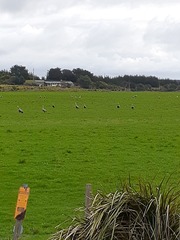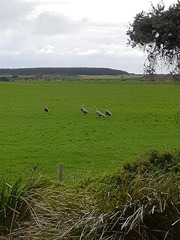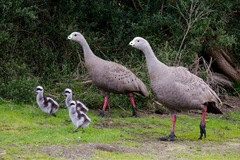The Cape Barren Goose is a very large, pale grey goose with a relatively small head. Its stubby triangular bill is almost concealed by a very prominent greenish-yellow cere (skin above the bill). It has rows of large dark spots in lines across the scapulars (shoulders) and wing coverts. The legs are pink to deep red and the feet black. In flight it shows dark wingtips and along the trailing edge of the wings.
You can help suppport me bringing this information to you via my Paypal
What habitats does Cereopsis novaehollandiae live in?
The Cape Barren Goose is a grazing bird and is often found in areas of pasture, tussock grass or low heathy scrub.
What is the distribution of Cereopsis novaehollandiae?
The Cape Barren Goose is found on the south-eastern coast of Australia, the southern coast of Western Australia and in south-eastern Victoria. It is locally dispersive and has been introduced to Kangaroo Island.
How big does Cereopsis novaehollandiae grow?
75 - 100 cm with a wingspan of 150 to 190 cm
You can support me by dropping some funds into my Paypal account
Disclaimer: A lot of work goes into trying to identify and ensure accurate identifications are made and that the listed Descriptions, Sizes, Habitats and Distribution information is as accurate and valid as possible. Unfortunately, information in this arena is ever changing and as such no guarantee can be offered that it is correct or currently valid as a result the information is provided as a guide, and it is always suggested that you do a little research to ensure you have the latest and most accurate information. View the reference's or bibliography I welcome any feedback and comments on the information provided.



